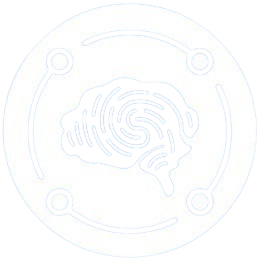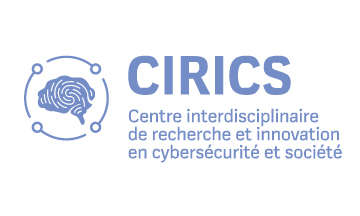

de Recherche et d’Innovation
en Cybersécurité et Société
Ouyed, O.; Allili, M. S.
Feature weighting for multinomial kernel logistic regression and application to action recognition Journal Article
In: Neurocomputing, vol. 275, pp. 1752–1768, 2018, ISSN: 09252312, (Publisher: Elsevier B.V.).
Abstract | Links | BibTeX | Tags: Action recognition, article, Classification, classification algorithm, Classification performance, Computer applications, controlled study, embedding, Feature relevance, feature relevance for multinomial kernel logistic regression, Feature weighting, Kernel logistic regression, kernel method, Learning, mathematical computing, Multinomial kernels, multinominal kernel logistic regression, Neural networks, priority journal, recognition, regression analysis, simulation, sparse modeling, Sparse models, sparse multinomial logistic regression, sparsity promoting regularization, standard, Supervised classification
@article{ouyed_feature_2018,
title = {Feature weighting for multinomial kernel logistic regression and application to action recognition},
author = {O. Ouyed and M. S. Allili},
url = {https://www.scopus.com/inward/record.uri?eid=2-s2.0-85035104467&doi=10.1016%2fj.neucom.2017.10.024&partnerID=40&md5=09687b392a405be4338799a750932cf3},
doi = {10.1016/j.neucom.2017.10.024},
issn = {09252312},
year = {2018},
date = {2018-01-01},
journal = {Neurocomputing},
volume = {275},
pages = {1752–1768},
abstract = {Multinominal kernel logistic regression (MKLR) is a supervised classification method designed for separating classes with non-linear boundaries. However, it relies on the assumption that all features are equally important, which may decrease classification performance when dealing with high-dimensional and noisy data. We propose an approach for embedding feature relevance in multinomial kernel logistic regression. Our approach, coined fr-MKLR, generalizes MKLR by introducing a feature weighting scheme in the Gaussian kernel and using the so-called ℓ0-“norm” as sparsity-promoting regularization. Therefore, the contribution of each feature is tuned according to its relevance for classification which leads to more generalizable and interpretable sparse models for classification. Application of our approach to several standard datasets and video action recognition has provided very promising results compared to other methods. © 2017 Elsevier B.V.},
note = {Publisher: Elsevier B.V.},
keywords = {Action recognition, article, Classification, classification algorithm, Classification performance, Computer applications, controlled study, embedding, Feature relevance, feature relevance for multinomial kernel logistic regression, Feature weighting, Kernel logistic regression, kernel method, Learning, mathematical computing, Multinomial kernels, multinominal kernel logistic regression, Neural networks, priority journal, recognition, regression analysis, simulation, sparse modeling, Sparse models, sparse multinomial logistic regression, sparsity promoting regularization, standard, Supervised classification},
pubstate = {published},
tppubtype = {article}
}
Bouchard, S.; Michaud, M.; Labonté-Chartrand, G.
In: Journal International de Bioethique, vol. 20, no. 3, pp. 137–144, 2009, ISSN: 12877352.
Links | BibTeX | Tags: article, book, Ethics, human, Humans, Manuals as Topic, Medical, medical ethics, methodology, Psychiatry, Research, Self Care, self help, Self-Help Devices, Self-Help Groups, Social Support, standard
@article{bouchard_giving_2009,
title = {Giving a self-care manual by ethically acceptable compensation for having participated in a research project in psychiatry [Offrir un manuel d'auto-traitement en guise de compensation éthiquement acceptable pour avoir participé à un projet de recherche en psychiatrie]},
author = {S. Bouchard and M. Michaud and G. Labonté-Chartrand},
url = {https://www.scopus.com/inward/record.uri?eid=2-s2.0-77953090302&partnerID=40&md5=3af50234354a0c107579bc673aab66e5},
issn = {12877352},
year = {2009},
date = {2009-01-01},
journal = {Journal International de Bioethique},
volume = {20},
number = {3},
pages = {137–144},
keywords = {article, book, Ethics, human, Humans, Manuals as Topic, Medical, medical ethics, methodology, Psychiatry, Research, Self Care, self help, Self-Help Devices, Self-Help Groups, Social Support, standard},
pubstate = {published},
tppubtype = {article}
}
Renaud, P.; Chartier, S.; Albert, G.; Décarie, J.; Cournoyer, L. -G.; Bouchard, S.
Presence as determined by fractal perceptual-motor dynamics Journal Article
In: Cyberpsychology and Behavior, vol. 10, no. 1, pp. 122–130, 2007, ISSN: 10949313.
Abstract | Links | BibTeX | Tags: adult, article, eye movement, Eye movements, female, gaze, human, Humans, immersion, male, mathematical computing, motor performance, perceptual motor dynamics, Psychomotor Performance, simulation, Social Environment, Social Perception, standard, three dimensional imaging, User-Computer Interface, virtual reality modeling language, Visual Perception
@article{renaud_presence_2007,
title = {Presence as determined by fractal perceptual-motor dynamics},
author = {P. Renaud and S. Chartier and G. Albert and J. Décarie and L. -G. Cournoyer and S. Bouchard},
url = {https://www.scopus.com/inward/record.uri?eid=2-s2.0-33847713017&doi=10.1089%2fcpb.2006.9983&partnerID=40&md5=c1c6df654279a13b1553e9cfbf43acd0},
doi = {10.1089/cpb.2006.9983},
issn = {10949313},
year = {2007},
date = {2007-01-01},
journal = {Cyberpsychology and Behavior},
volume = {10},
number = {1},
pages = {122–130},
abstract = {This paper presents a tentative model of the role of perceptual-motor dynamics in the emergence of the feeling of presence. A new method allowing the measure of how gaze probes three-dimensional space in immersion is used to support this model. Fractal computations of gaze behavior are shown to be more effective titan standard computations of eye movements in predicting presence. © Mary Ann Liebert, Inc.},
keywords = {adult, article, eye movement, Eye movements, female, gaze, human, Humans, immersion, male, mathematical computing, motor performance, perceptual motor dynamics, Psychomotor Performance, simulation, Social Environment, Social Perception, standard, three dimensional imaging, User-Computer Interface, virtual reality modeling language, Visual Perception},
pubstate = {published},
tppubtype = {article}
}



